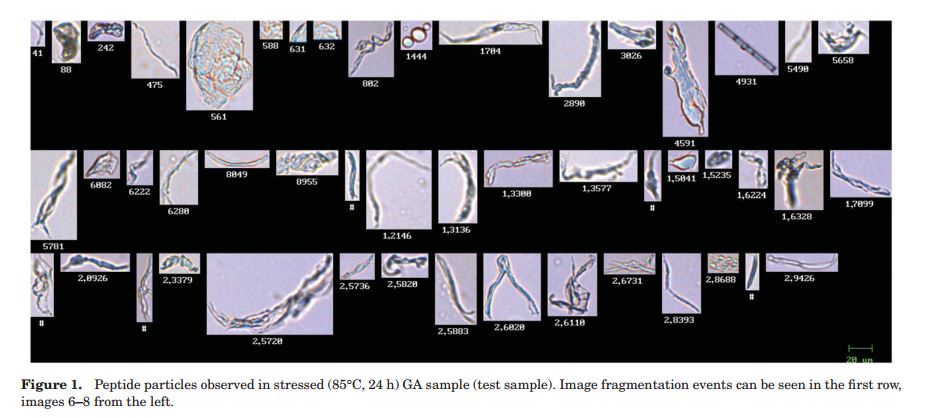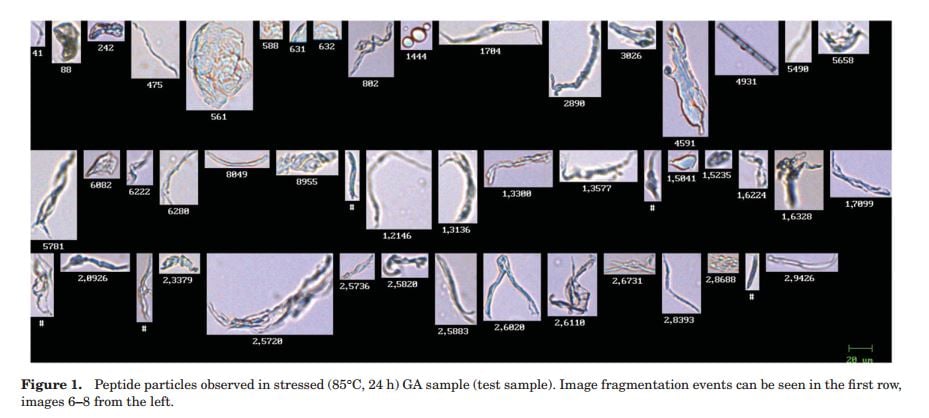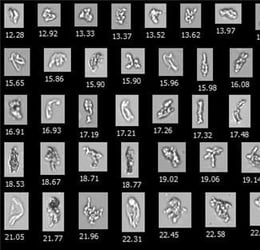The most common method for characterizing subvisible particles (SVP) ranging in size from 10µm to 100µm is light obscuration (LO).
"LO, however, has a major drawback—an inability to assess morphology and thus differentiate between particles of various natures, air bubbles, silicon oil droplets, nonprotein particles, and protein aggregates." (Levin et al., 2015).
Pictured above: Imaged proteins captured by FlowCam from Levin et al. (2015). "Particles in this aliquot were very well detected by the FlowCam (Fig. 1), indicating excellent optical resolution of the instrument. Image fragmentation.... was a relatively rare event" Levin et al. (2015).
Levin et al. Quantitatively Analyze Glatiramer Acetate
Levin et al. published a paper in the Journal of Pharmaceutical Sciences "Development of Flow Imaging Analysis for Subvisible Particle Characterization in Glatiramer Acetate" (2015) in which they describe their method for using the FlowCam® for subvisible particle (SVP) quantitation of injectable glatiramer acetate (GA), the active ingredient in Copaxone®, produced by Teva Pharmaceutical.
Levin et al. Overcome Nonhomogeneity
Levin et al. developed a method to overcome nonhomogeneous SVP distribution. GA is comprised of polypeptides of varying sizes, with a molecular weight distribution spanning 2500 to 20,000 Da. In this paper, Levin et al. describe their method for achieving homogeneity and method precision when quantifying nonprotein particles and proteinaceous aggregates that may be indicative of protein degradation.
Particles sized of 1 to 500μm were analyzed using a FlowCam. A sample of GA intentionally spiked with protein aggregates from stress heating was used for analysis. Levin et al. (2015) achieved 100% SVP counting accuracy and 104% size accuracy.
Read the Article
Find out how they did it—download the article from one of the links below.
Levin et al. used a threshold value for dark pixels of 20. Did you know the FlowCam is optimized for transparent and semi-transparent particle detection and imaging?
Citation:
Levin, I., Zigman, S., Komlosh, A., and J. Kettenring (2015), Development of Flow Imaging Analysis for Subvisible Particle Characterization in Glatiramer Acetate. Journal of Pharmaceutical Sciences. doi: 10.1002/jps.24550











